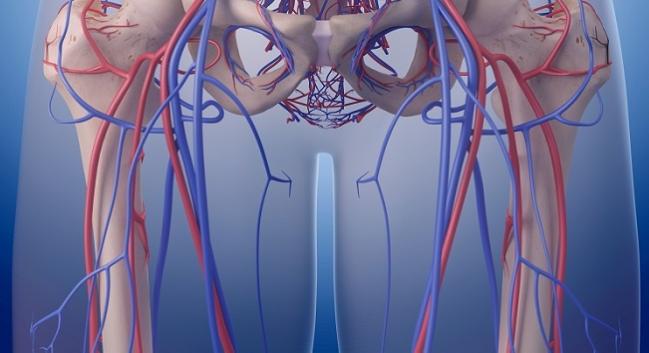Vici Venous Stent Shows Good Primary Patency, Few MAE by 12 Months: VIRTUS
The idea of a vein-dedicated device is appealing, one expert says, but it’s still uncertain whether optimizing design will improve results over the long term.

HOLLYWOOD, FL—The Vici venous stent offers a high rate of primary patency and low rate of major adverse events (MAE) through 12-month follow-up, according to data from the VIRTUS pivotal study of patients with blockages in the iliofemoral venous outflow tract.
“We’ve obviously all been looking forward to the introduction of a dedicated venous stent on the market,” said Robert Lookstein, MD (Icahn School of Medicine at Mount Sinai, New York, NY), when presenting the results last week at the International Symposium on Endovascular Therapy. Several vein-focused designs have been in the works, he pointed out, including the aforementioned Vici (Boston Scientific) plus the Zilver Vena (Cook), Venovo (Bard), and Abre (Medtronic). All have CE Mark but not US Food and Drug Administration approval.
Ideally, he said, a venous stent would be crush resistant, have enough flexibility to resist kink at physiological angles, be durable enough to endure shortening, twisting, and bending at the groin, deploy consistently, and show up on fluoroscopy, among other things.
Asked by TCTMD if a venous stent is truly necessary, Michael Dake, MD (University of Arizona Health Sciences, Tucson), replied: “I think that conceptually people think there’s a need.
“It’s yet to really be proven if these new custom-designed, purpose-focused devices indeed provide better results than just generic stents that are used in the artery. But obviously veins and arteries are different,” observed Dake, who himself presented 12-month data from the VERNACULAR trial testing the Venovo device at VIVA 2018. He also emphasized the need for strength as well as flexibility in a venous stent.
Certainty that particular design traits suited to the venous setting will translate into improved outcomes remains a “leap of faith” for now, he said.
VIRTUS
VIRTUS enrolled 170 patients (mean age 54 years; 44% men) with obstruction of the iliofemoral venous outflow tract, treating them with the Vici stent. The self-expanding nitinol device is available in diameters of 12, 14, and 16 mm and lengths of 60, 90, and 120 mm.
Mean lesion length was 111.3 mm in the study, and mean stented length was 149.8 mm. Around one-third of patients had a total occlusion. Etiology was postthrombotic in 75% and nonthrombotic in 25% of patients. Lesions extended through both the common and external iliac veins for 34.7%, and a further 31.8% also involved the common femoral vein.
The rate of procedural technical success was 98.8%. At 30 days, freedom from MAE (device- or procedure-related death, bleeding requiring surgical or endovascular intervention or transfusion, arterial or venous injury requiring surgical or endovascular intervention, or acute DVT outside the target vein segment; clinically significant pulmonary embolism; or stent embolization), was 98.8%. The only two events to occur were in the arterial or venous injury category.
At 12 months, primary patency (freedom from thrombosis-related occlusion, target-vessel reintervention, and in-stent restenosis > 50%) was 84%, exceeding the performance goal of 72.1% (P < 0.001). Primary patency was better in lesions with nonthrombotic versus postthrombotic origins (96.2% vs 79.8%)
Additionally, the Venous Clinical Severity Score declined from 10 at baseline to 5.6 at 12 months, with only 27.3% of patients having a score of 8 or higher.
“We are looking forward to the FDA [premarket approval] submission very, very shortly,” Lookstein concluded.
To TCTMD, Dake cautioned that it’s hard to draw comparisons between the study results for venous stents and those obtained with off-label use of arterial stents. “But the performance goal based on a literature-derived number that these trials had to beat was 74%, so they’re kind of crushing it right now, with 15% and in some cases 10% better primary patency at 12 months,” he commented.
Long-term outcomes are still needed, Dake emphasized, noting that VERNACULAR has a planned follow-up duration of 3 years. VIRTUS is slated for 5 years.
Caitlin E. Cox is News Editor of TCTMD and Associate Director, Editorial Content at the Cardiovascular Research Foundation. She produces the…
Read Full BioSources
Lookstein R. VIRTUS: trial design and primary endpoint results. Presented at: ISET 2019. January 29, 2019. Hollywood, FL.
Disclosures
- Lookstein reports serving as a consultant to Boston Scientific, Medtronic, Gore, and BTG; on the advisory panels of Boston Scientific and Medtronic; on the speakers bureaus of Abbott, and Endologix; receiving research support from Philips Healthcare, Bard, BTG, Boston Scientific, Penumbra, Angiodynamics, and Terumo; and serving on the clinical events committees of DISRUPT PAD (Shockwave) and Intact Vascular (TOBA II).
- Dake reports honoraria from Bard Peripheral Vascular, Cook Medical and consulting fees from Cook Medical, Gore & Associates, and Novate.


Comments